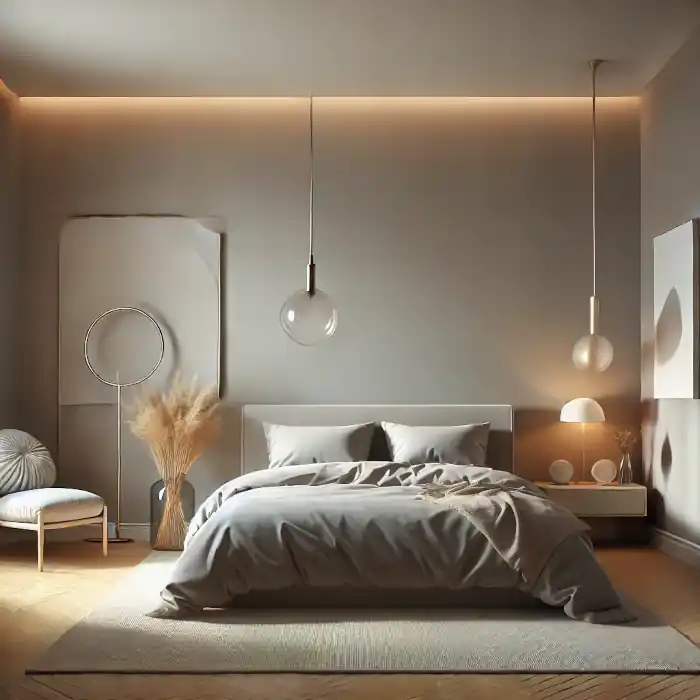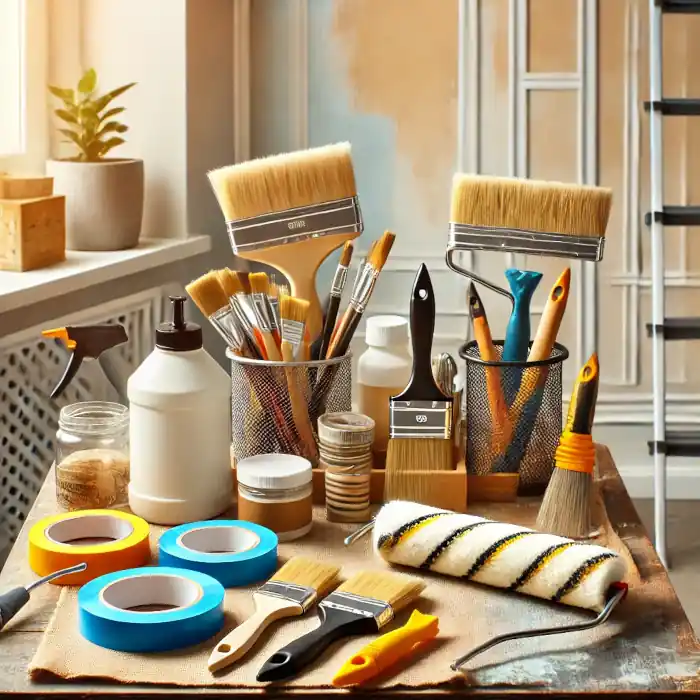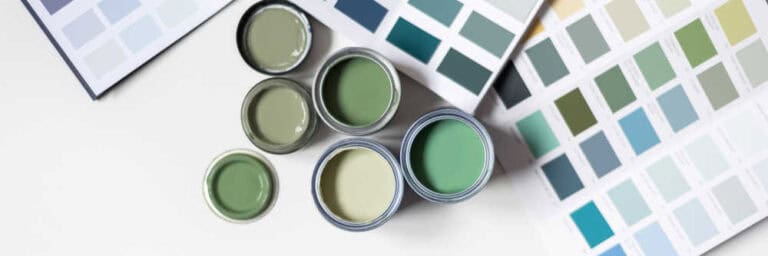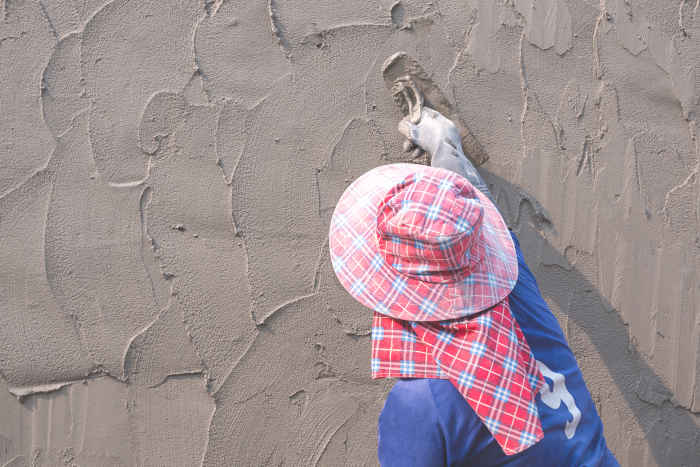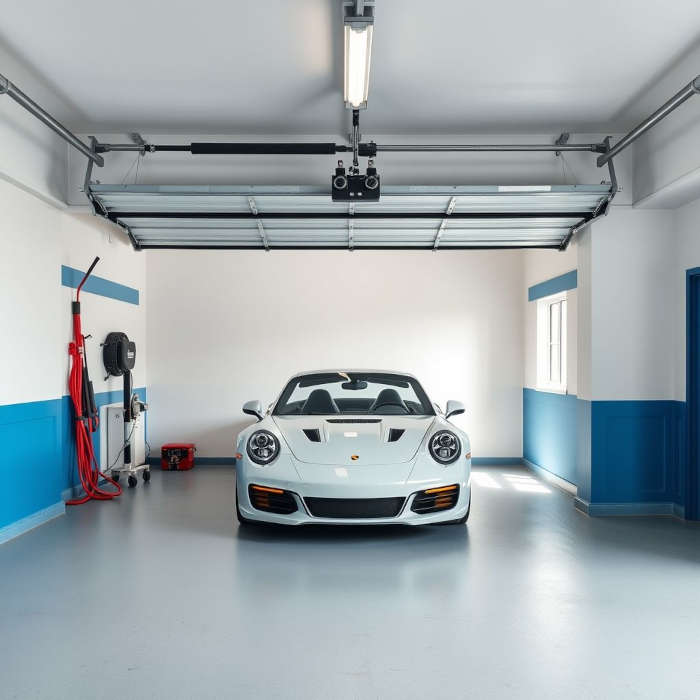As an Amazon Associate, I earn from qualifying purchases. Privacy Policy / Terms
(Debunking common misconceptions about painting techniques and products.)
When it comes to painting your home, everyone seems to have an opinion. From self-proclaimed DIY experts to well-meaning friends and family, painting myths spread quickly and often lead to unnecessary mistakes, wasted time, and even extra costs. It’s time to set the record straight! Let’s debunk the most common painting myths and reveal the truth behind achieving a professional-quality finish.
Myth #1: You Don’t Need to Prep Before Painting
The Truth: Proper preparation is crucial for a smooth, long-lasting paint job. Skipping prep work leads to peeling, uneven application, and a finish that won’t last.
Why It’s Wrong: Some believe that just slapping on a new coat of paint will cover imperfections, but without proper prep, you may run into adhesion issues. Surfaces need to be cleaned, sanded, and primed in some cases, especially if dealing with glossy or previously painted walls.
What to Do Instead: Always clean your walls, fill in holes, sand rough patches, and use primer when necessary. This ensures your paint sticks properly and provides an even finish.
Myth #2: Dark Colors Make a Room Feel Small
The Truth: While dark colors can create a cozy atmosphere, they don’t necessarily make a room feel claustrophobic when used correctly.
Why It’s Wrong: The feeling of spaciousness is influenced more by lighting, furniture arrangement, and ceiling height than just paint color. Dark colors can add depth and sophistication without making a room feel cramped.
What to Do Instead: Balance dark walls with light-colored furniture, mirrors, and good lighting to keep the space open and inviting.
Myth #3: More Coats Mean a Better Finish
The Truth: Applying excessive coats won’t improve your finish if the base layers are not properly prepared or applied.
Why It’s Wrong: Many people assume that layering paint will solve all their problems, but too many coats can actually lead to streaks, cracking, or an uneven texture.
What to Do Instead: Follow manufacturer recommendations for coverage and drying times. If you need extra coverage, applying thinner, even coats is better than slapping on multiple thick layers.
Myth #4: You Can Skip Primer If You’re Using High-Quality Paint
The Truth: Primer plays a crucial role in adhesion, coverage, and durability—no matter how expensive your paint is.
Why It’s Wrong: Some premium paints claim to be a ‘paint and primer in one,’ but these products often still require a base primer, especially for new drywall, stained surfaces, or drastic color changes.
What to Do Instead: Always prime when painting over bare surfaces, repairing stains, or switching from dark to light colors to ensure a flawless, long-lasting finish.
Myth #5: Any Paintbrush Will Do the Job
The Truth: The right brush or roller makes a huge difference in the final look and efficiency of your paint job.
Why It’s Wrong: Cheap, low-quality brushes can leave streaks, shed bristles, and fail to hold enough paint for an even application.
What to Do Instead: Invest in high-quality brushes and rollers suited for your specific paint type (latex vs. oil-based) and surface texture. Synthetic brushes work best for water-based paints, while natural bristles work well with oil-based paints.
Myth #6: Ceiling Paint Should Always Be White
The Truth: While white ceilings are the norm, painting them a complementary or even bold color can add character and design appeal.
Why It’s Wrong: White ceilings reflect light, but in some spaces, a subtle tint or dramatic contrast can actually enhance the room’s overall look.
What to Do Instead: Consider soft tones like light gray or beige for a modern touch or experiment with deeper hues in high-ceiling rooms for a cozy, stylish atmosphere.
Myth #7: Exterior Paint Can Be Used Indoors (and Vice Versa)
The Truth: Interior and exterior paints are formulated differently and should be used as intended.
Why It’s Wrong: Exterior paint contains additives for weather resistance, but these can make it unsafe for indoor use due to higher VOC levels. Similarly, interior paint lacks the durability to withstand harsh outdoor elements.
What to Do Instead: Always use paint formulated for the specific environment to ensure safety and longevity.
Myth #8: You Can Paint Over Wallpaper Without Removing It
The Truth: While it’s possible in some cases, painting over wallpaper is rarely a good idea.
Why It’s Wrong: Wallpaper seams and texture will show through the paint, and moisture from the paint can cause it to bubble or peel over time.
What to Do Instead: The best approach is to remove wallpaper, clean the walls, and apply a good primer before painting.
Myth #9: You Should Paint in One Go Without Taking Breaks
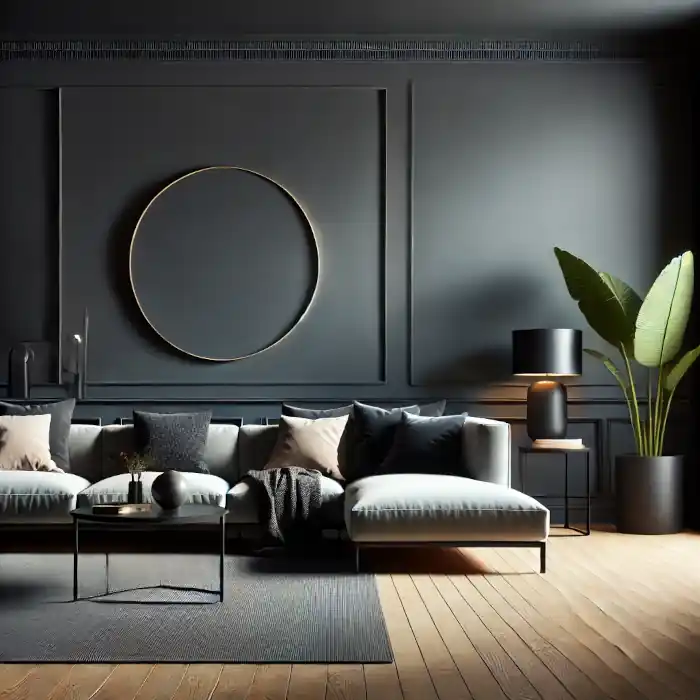
The Truth: Rushing the job leads to mistakes, streaks, and poor blending.
Why It’s Wrong: Allowing paint to dry too quickly (especially in hot or dry conditions) can cause lap marks, making the finish uneven.
What to Do Instead: Work in sections and take short breaks, keeping a wet edge to maintain a smooth finish. Proper drying time between coats is essential for the best results.
Myth #10: Paint Is Just for Aesthetic Purposes
The Truth: Paint does much more than enhance visual appeal—it protects surfaces from wear, moisture, and even bacteria.
Why It’s Wrong: Paint serves as a barrier against mold, UV damage, and general wear and tear, making it a vital part of home maintenance.
What to Do Instead: Choose high-quality, durable paints suited for your home’s needs, such as moisture-resistant formulas for bathrooms and kitchens.
Final Thoughts
Painting is one of the most effective ways to transform a space, but misinformation can make the process frustrating and inefficient. By debunking these common myths, you can approach your next paint project with confidence, ensuring a smoother experience and a more professional-looking finish.
Remember: proper prep work, the right tools, and patience are key to achieving a beautiful, long-lasting result. So the next time someone shares outdated painting advice, you’ll know the truth!
Views Expressed Disclaimer
The views, opinions, and information presented in this article are for informational purposes only and do not necessarily reflect the official policies or positions of Crocker Home Painting Company. While every effort has been made to ensure accuracy, Crocker Home Painting Company is not liable for any errors, omissions, or decisions made based on the content provided. Readers are encouraged to consult professionals for specific advice or assistance related to their unique circumstances.


